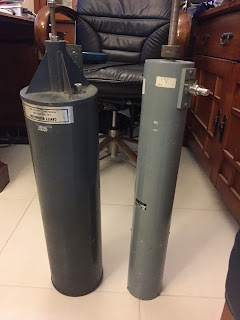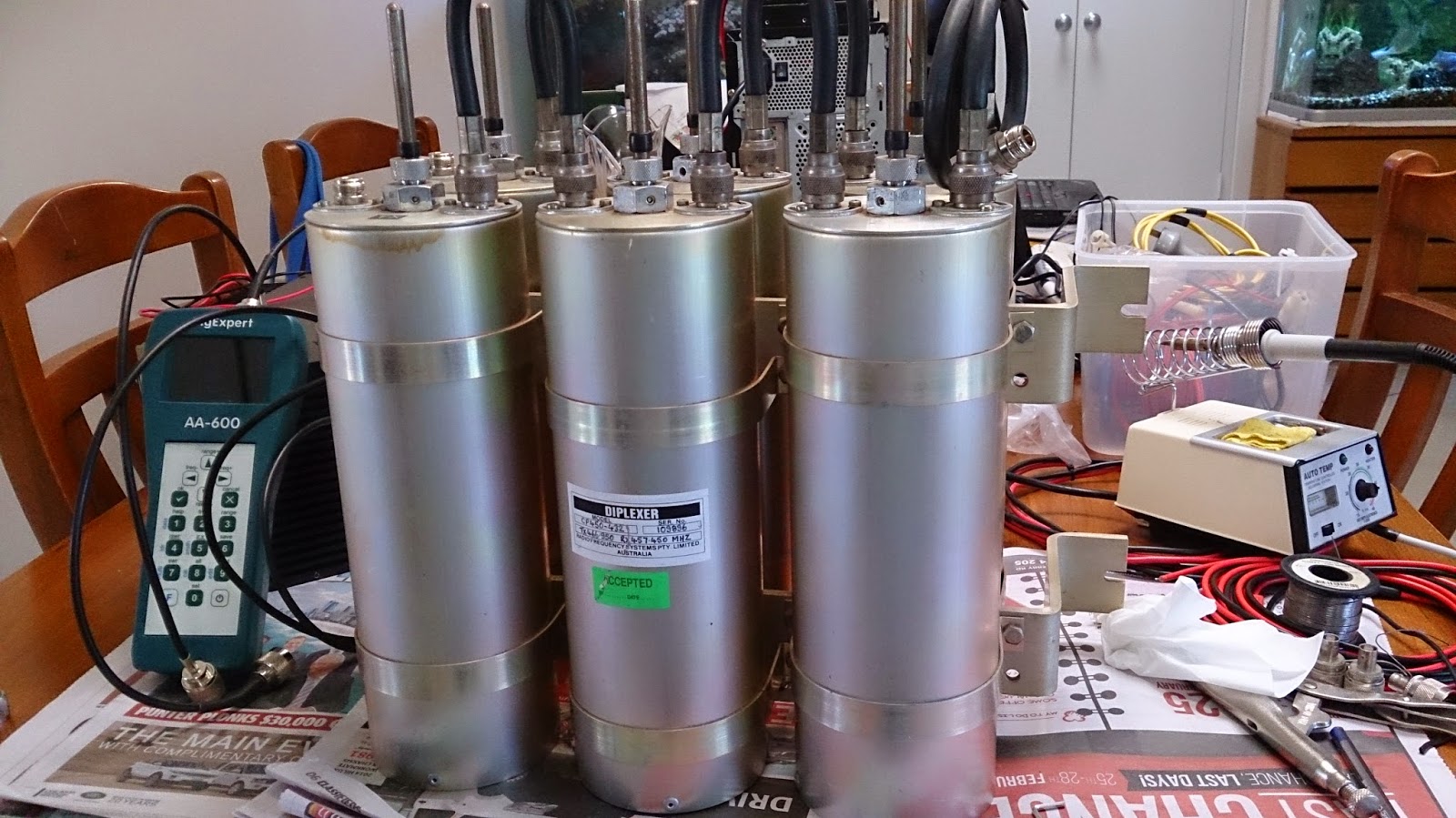Cavity resonators; size does matter and preview of my HP 8591A spectrum analyzer

Cavity resonators; size does matter and preview of my HP 8591A spectrum analyzer The Q or quality of a cavity resonator or filter is critical. The simplest way of increasing Q is to increase the diameter. The club has been lent what seemed a pretty ordinary 2 m cavity resonator; even has UHF rather than N connectors and is light. I wasn't expecting too much. But it is 150 mm diameter compared to the 100 mm ex-government cavity filters the club has. The two cavity filters. Note that the filters are not tuned to the same frequency; but they are not too far apart to make a difference to Q. However, what a difference size makes! The Q is visibly much better. Note, none of the instruments were calibrated for this exercise, it is just to show the qualitative difference. First, the quick and dirty antenna analyzer and a 50 Ohm terminator. Then with the club's Rigol spectrum analyzer. Then with my recently acquired HP 8591A spectrum analyzer; 1990s...




